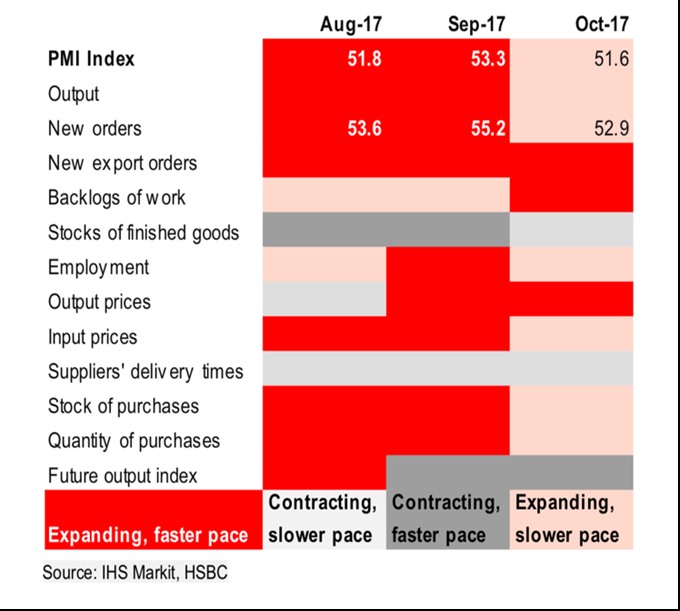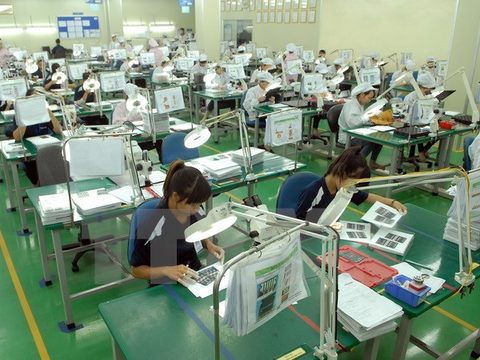Accurate valuations are key to luring FDI
Accurate valuations are key to luring FDI
Foreign investment in Vietnam is still on the rise, with the latest number showing that more than $28.2 billion were registered to invest in the country in the first 10 months of this year, up 37.4 per cent on-year.
With Vietnam increasingly emerging as an investment magnet, foreign investors are expected to continue flocking here, though some regulatory caveats remain. Even though the Vietnamese government has allowed foreign share ownership of up to 100 per cent in some firms, versus the previous 49 per cent cap, the lack of detailed guidance on which sectors are restricted and which will be opened could leave investors confused. It is in this context that investors need to take note of the fact that the 49 per cent ceiling would still apply for areas where “conditions” were placed on foreign investments. Meanwhile, sectors governed by separate ownership regulations, such as banking, still cap total foreign stakes at 30 per cent.
When deciding to invest in Vietnam, aside from understanding the regulatory requirements, foreign businesses must deal with several difficult questions: ‘How can the actual value of local businesses be gauged?’ ‘Why is that important?’ And perhaps most significantly, ‘What are the hurdles facing foreign investors in this regard and how can they be overcome?’
Accurate valuations, a first step
Valuation matters because it is the base on which foreign businesses will decide how much they are willing to fork out for their investment. Careful determination of the value of the business is crucial to foreign investors who ultimately need to secure a return on their investment. Key aspects of the business, especially its value drivers, are part and parcel of such valuation.
If investors are not able to ascertain the potential value of the business or do not have sufficient data to develop an investment case, they are likely to abort their investment plans. Investors not only need to assess the value of the business, they also need to understand how their participation will help to boost it. It is in the interest of local companies to provide detailed projections to investors.
In general, there are three main methods considered for the valuation of the company – the Income Approach, the Market Approach, and the Net Asset Approach. The selection of the most appropriate method will largely depend on the characteristics of the business subject to valuation. What constitutes the most appropriate method? That should be the one that best captures the current stage the business operates in.
The Income and Market approaches
For businesses to be valued on a ‘going concern’ and ‘as-is’ basis, either the Income Approach or the Market Approach works. The Income Approach, also known as the Discounted Cash Flow Approach, indicates the fair market value of a business based on the cash flows that the business can be expected to generate in the future.
Typically, the Market Approach is considered when a company is in a stable business environment and has a mature business model. This method is appropriate for the valuation of a marketable, significant minority or majority ownership interest using the premise of a ‘going concern’ business.
The Net Asset Approach
The Net Asset Approach is factored in when the value of a company comes from the assets it holds rather than the cash flows that the business can be expected to generate in the future. The approach indicates the fair market value of a business based on the value of the companies’ net assets.
For foreign investors, picking the right Vietnamese partner is obviously a daunting task, but not the most challenging one in a country where the financial information of companies subject to valuation remains unclear.
Among the key challenges standing in the way of conducting valuations of a company, the first one is the lack of detailed financial statements, mainly driven by the absence of regulations that compel private firms to conduct statutory audits. This is especially the case with small- and medium-d enterprises. Secondly, some companies which are focused on day-to-day operations do not prepare detailed business projections. Even companies that do so fail to furnish enough details to substantiate the budget projection as well as to develop long-term financial projections. Another hurdle is the lack of clarity on the future business strategy and vision, which is likely to hamper the valuation process and create an expectation gap between investors and business owners.
Taking the public sector out of the equation, differences in the values of state-owned enterprises (SOEs) would definitely have a bearing on the speed of their equitisation – the term Vietnam uses to describe the process of issuing shares to partially privatised state-owned businesses in which the government will still hold the majority stake.
These differences include methods of valuation, benchmarking for valuation, and SOEs’ large land assets. But they are not the only hindrance to the equitisation process. Aside from the shortage of detailed information, investors are also most concerned about transparency, fair play, and their control over the business.
It is extremely crucial for local companies, private and state-owned alike, to be on the same page with foreign investors on how the latter value their businesses. This would allow local companies to tailor relevant information to the needs of foreign investors. Local companies may also want to conduct their own independent valuation prior to inviting an investor to participate in their business. Doing so would allow local companies to pin down the key areas that are on the interest radar of foreign investors and avoid any possible valuation gap.
Making life easier for investors to gauge how local companies perform is a prerequisite to cash in on the growing foreign direct investment wave in Vietnam. The willingness to accommodate the legitimate concerns of foreign investors in this regard is a recipe for a win-win joint venture.






















